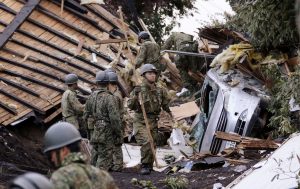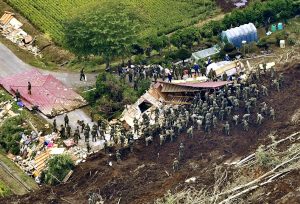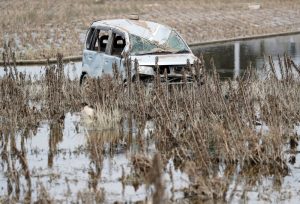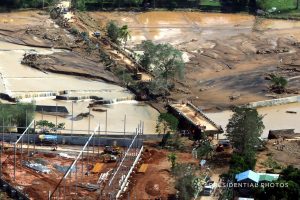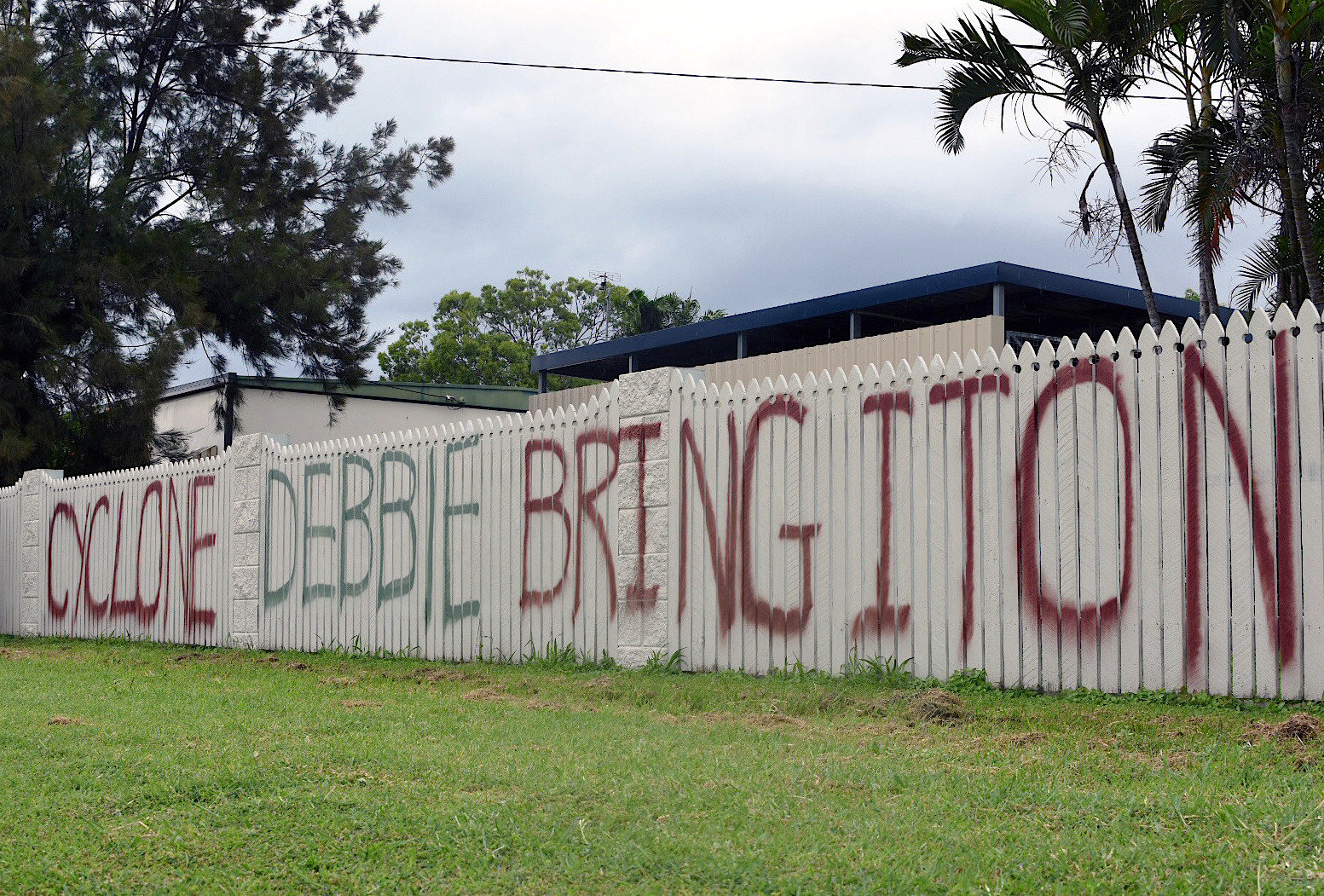
By Kaori Kaneko and Osamu Tsukimori
TOKYO (Reuters) – The death toll from a powerful earthquake in northern Japan last week rose to 44, with 660 injured, the government said on Monday, as electricity supply remained short and top automaker Toyota suspended work at most of its assembly plants.
The pre-dawn, 6.7-magnitude quake on Thursday temporarily paralyzed the island of Hokkaido, cutting off access by air and train and knocking out power to an island the size of Austria.
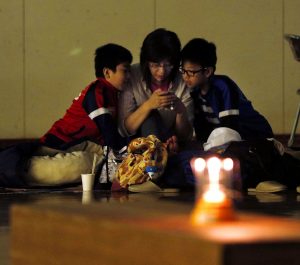
A family is seen at a gymnasium of elementary school, acting as an evacuation shelter at an area damaged by an earthquake in Sapporo, Hokkaido, northern Japan, in this photo taken by Kyodo September 7, 2018. Mandatory credit Kyodo/via REUTERS
About 2,500 people remain in evacuation centers, according to the Fire and Disaster Management Agency, after landslides buried houses and rain at the weekend loosened soil in a further threat to unstable houses.
Yoshihide Suga, the top government spokesman, said a team of about 40,000 Self-Defense Force troops, police, firefighters and others were working on clearing debris and other clean-up operations. There were no more missing residents, he said.
Power supply has been restored to nearly all customers in Hokkaido but trade minister Hiroshige Seko called on the island’s businesses and 5.3 million residents to use about 20 percent less energy to prevent further blackouts.
“It’s very important now for all residents, businesses, the government, and electricity suppliers to work together towards this goal of 20 percent energy-saving,” Seko told a news conference late on Sunday.
The government has no plans for rolling blackouts on Monday and Tuesday despite the continued closure of a fossil fuel-fired power plant that supplies about half the island’s power, he said.
With electricity restored, Toyota Motor Corp said on Monday its parts factory in Tomakomai, Hokkaido, which builds transmissions and other components, was preparing to resume production during the night shift.
However, the fallout has already spread beyond the island, with Toyota suspending production at 16 of its 18 domestic car assembly plants on Monday to assess its parts inventory. The automaker said it would gradually restore production from Tuesday, resuming work fully by Thursday.
(Reporting by Kaori Kaneko, Maki Shiraki, Osamu Tsukimori; Writing by Chang-Ran Kim; Editing by Paul Tait)

